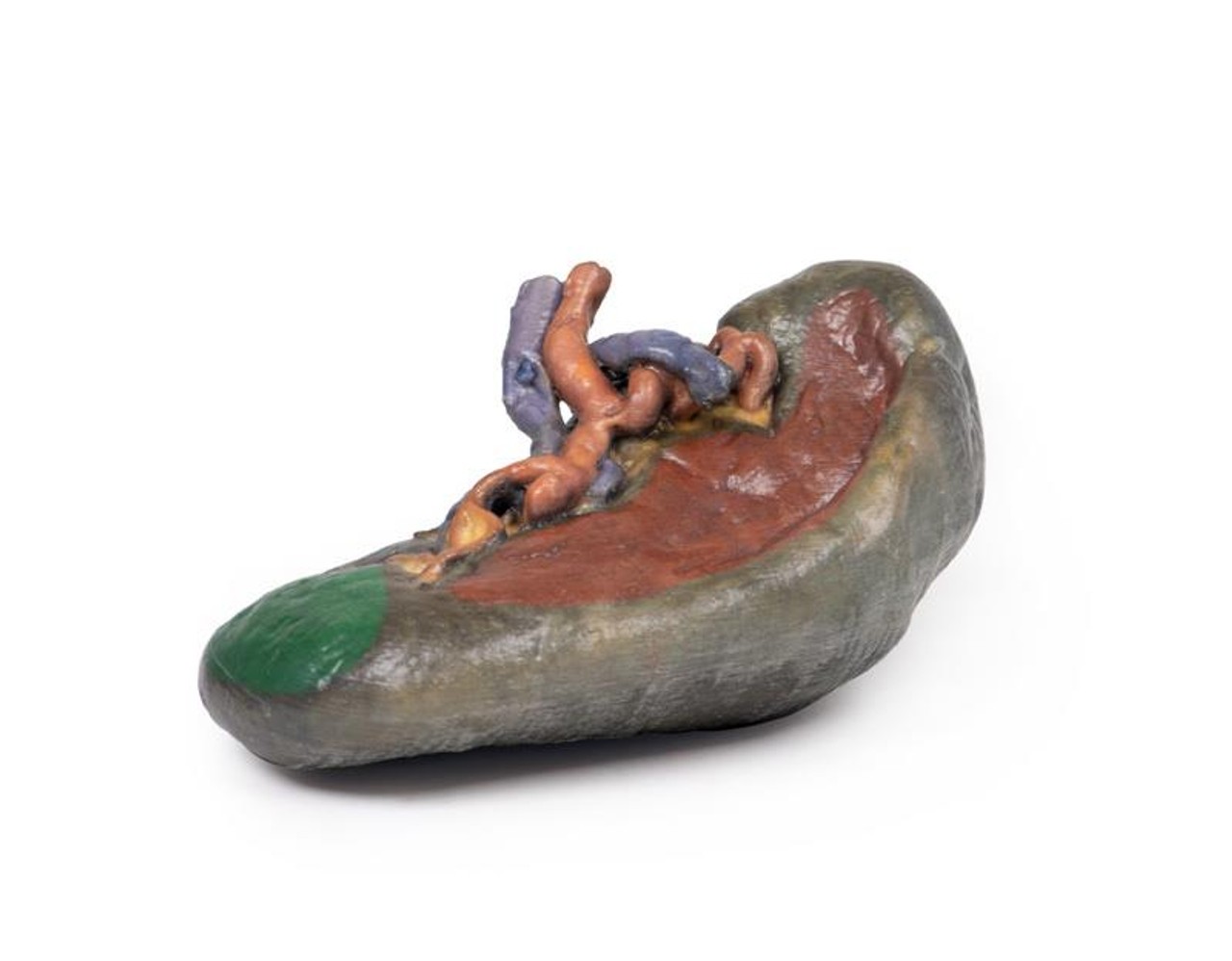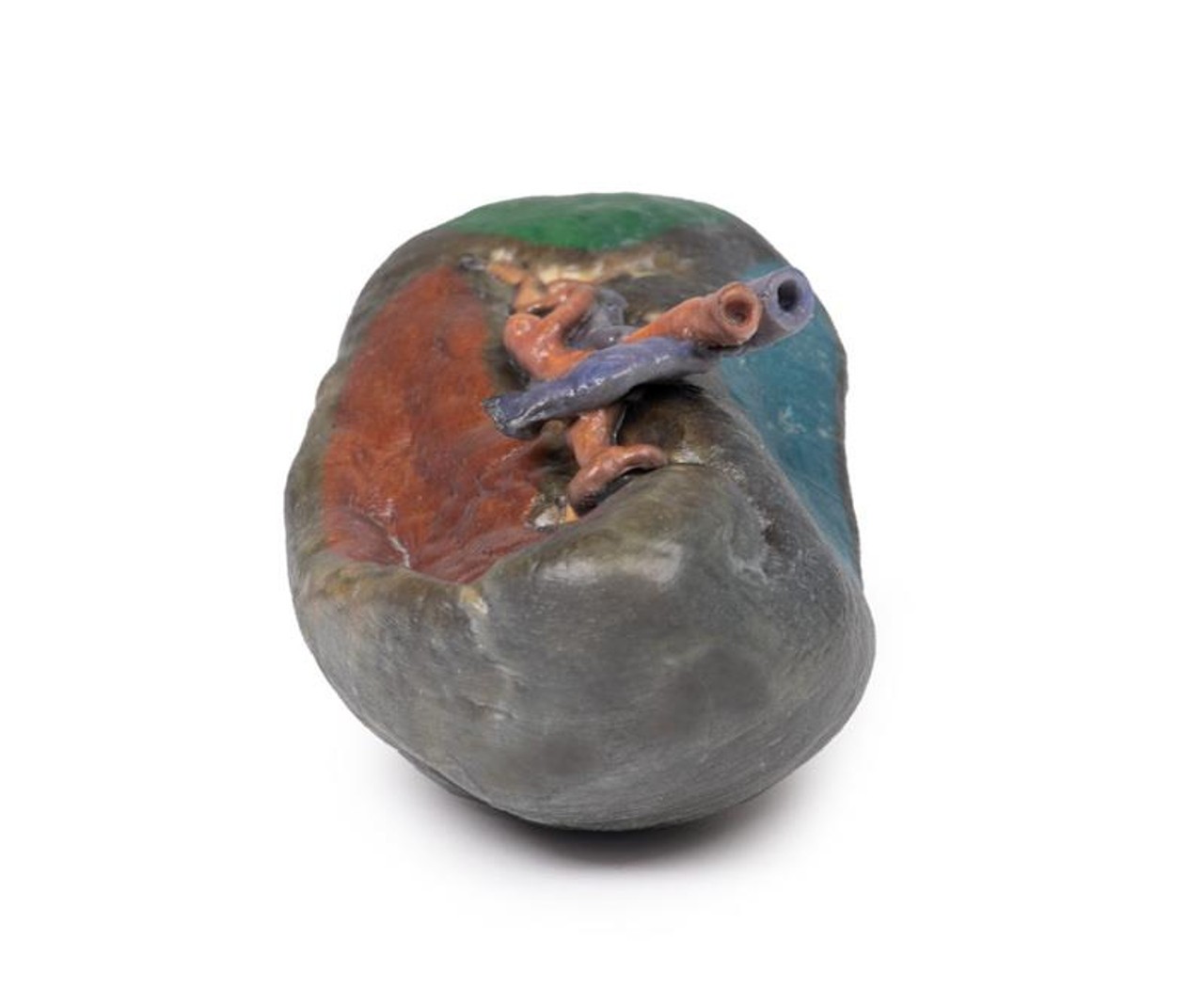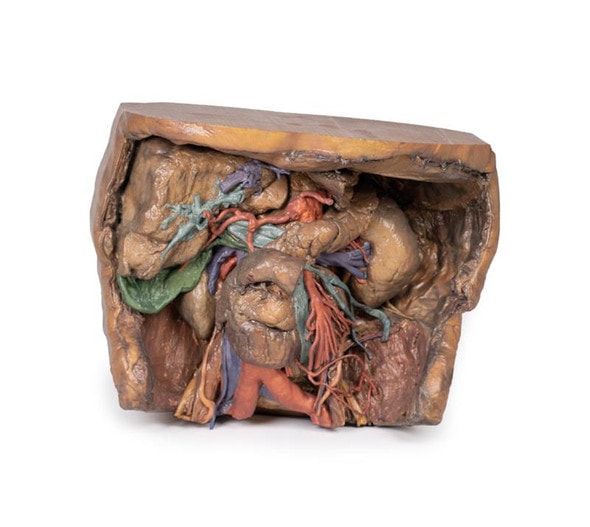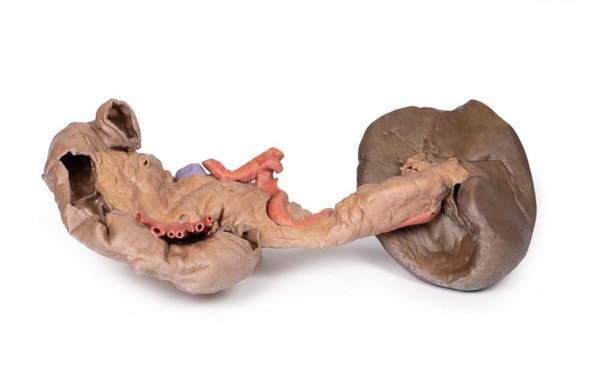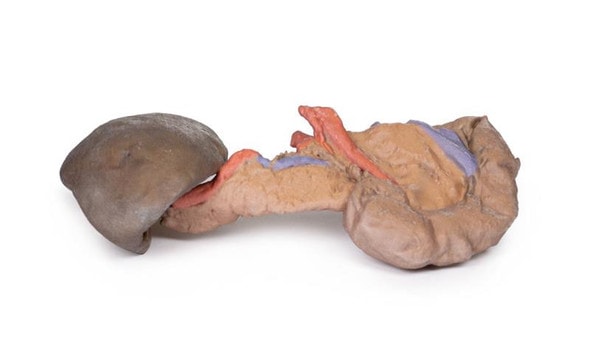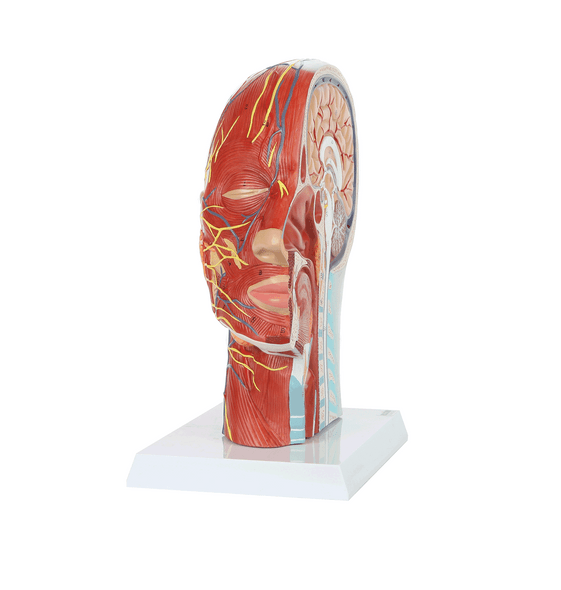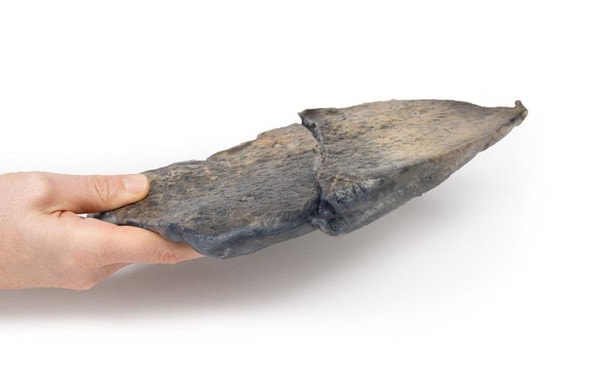Description
At the splenic hilum, the splenic artery and vein can be seen entering the spleen to supply and drain the organ. The opening of the splenic vein has been kept patent by the insertion of silicon tubing in the model. This model shows the most superior branch of the splenic vein has been sectioned from its normal passage into the spleen. The tortuous of twisted shape of the splenic artery can be appreciated as it branches at the hilum. This reflects the overall curled and twisted shape of the vessel across its course from the coeliac trunk to the spleen.
The splenic artery and vein give rise to short gastric vasculature as well as the left gastro-omental vasculature. In this specimen, the splenic artery and vein have been cut after these vessels have branched, and thus they cannot be seen in the model.
The splenorenal ligament connects the spleen to the left kidney and contains the splenic artery, splenic vein and tail of the pancreas. It is formed by the overlaying of peritoneum that was originally part of the dorsal mesentery during embryological development over this vasculature. The splenorenal ligament is not observable on the model as the peritoneum has been removed in order to expose the splenic vasculature.
The gastrosplenic ligament connects the stomach to the spleen and contain the short gastric arteries and part of the left gastro-omental artery at its origin as it branches off the splenic artery. Like the splenorenal, the gastrosplenic ligament is formed by the overlaying of peritoneum that was originally part of the dorsal mesentery during embryological development. The gastrosplenic ligament is not present as the splenic artery has been dissected after its formation.
The outside of the spleen consists of a thin fibrous capsule. Due to its delicate nature and the large quantity of blood usually contained in the spleen, the fibrous capsule is vulnerable to rupture.
Advantages of 3D Printed Anatomical Models
- 3D printed anatomical models are the most anatomically accurate examples of human anatomy because they are based on real human specimens.
- Avoid the ethical complications and complex handling, storage, and documentation requirements with 3D printed models when compared to human cadaveric specimens.
- 3D printed anatomy models are far less expensive than real human cadaveric specimens.
- Reproducibility and consistency allow for standardization of education and faster availability of models when you need them.
- Customization options are available for specific applications or educational needs. Enlargement, highlighting of specific anatomical structures, cutaway views, and more are just some of the customizations available.
Disadvantages of Human Cadavers
- Access to cadavers can be problematic and ethical complications are hard to avoid. Many countries cannot access cadavers for cultural and religious reasons.
- Human cadavers are costly to procure and require expensive storage facilities and dedicated staff to maintain them. Maintenance of the facility alone is costly.
- The cost to develop a cadaver lab or plastination technique is extremely high. Those funds could purchase hundreds of easy to handle, realistic 3D printed anatomical replicas.
- Wet specimens cannot be used in uncertified labs. Certification is expensive and time-consuming.
- Exposure to preservation fluids and chemicals is known to cause long-term health problems for lab workers and students. 3D printed anatomical replicas are safe to handle without any special equipment.
- Lack of reuse and reproducibility. If a dissection mistake is made, a new specimen has to be used and students have to start all over again.
Disadvantages of Plastinated Specimens
- Like real human cadaveric specimens, plastinated models are extremely expensive.
- Plastinated specimens still require real human samples and pose the same ethical issues as real human cadavers.
- The plastination process is extensive and takes months or longer to complete. 3D printed human anatomical models are available in a fraction of the time.
- Plastinated models, like human cadavers, are one of a kind and can only showcase one presentation of human anatomy.
Advanced 3D Printing Techniques for Superior Results
- Vibrant color offering with 10 million colors
- UV-curable inkjet printing
- High quality 3D printing that can create products that are delicate, extremely precise, and incredibly realistic
- To improve durability of fragile, thin, and delicate arteries, veins or vessels, a clear support material is printed in key areas. This makes the models robust so they can be handled by students easily.

